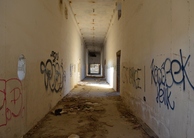Sexual Behavior in Prison Populations Understood Through the Framework of Rational Choice and Exchange Theory
By
2016, Vol. 8 No. 01 | pg. 3/3 | « ConclusionResearchers have formulated many models in attempting to explain the concept of prison sex; however, none have looked into the possible connection of rational choice and exchange theories in explaining inmate sexual behavior. Although standards such as the Prison Rape Elimination Act serves to prevent and respond to sexual assault(s) of the incarcerated population, research still suggests that such behavior occurs both consensually and non-consensually. Inmates appear to weigh the costs and benefits associated with engaging in sexual relations with the primary motivations being increased access to commissary and/or other tangible goods in addition to companionship (Wooden & Parker, 1982; Greer, 2000). Additionally, some inmates agree to sexual actions as a form of protection (Trammell, 2011) and group solidarity. The literature suggests that regardless of the combination of motives, inmates engage in rational decision making when weighing the pros and cons for exchanges involving sexual behaviors. Since many believe that sex between inmates leads to issues such as institutional violence, health concerns, and other financial costs associated with the behavior, identifying the motivations for such behavior is crucial in preventing and intervening in the sexual behavior of inmates. For example, Tewksbury and Conner (2014) suggest that those who violated the rules of the institution in general, were also the ones more likely to defy the prohibitions of sexual activity.Thus, correctional administration should seek to seriously address and monitor all inmates. With that said, correctional administration need to remain focused on running a safe and secure facility focused on providing basic needs and rehabilitative programs. Thus, according to rational choice and exchange theory, correctional administrators should focus on ensuring that all inmates have access to the items which seem to entice many inmates to act out sexually (e.g. commissary) (Tewksbury & Conner, 2014). ReferencesAlarid, L.F. (2000). Sexual assault and coercion among incarcerated women prisoners: Excerpts from prison letters. The Prison Journal, 80(4), 391-406. Altaf, A., Janjua, N.Z., Kristensen, S., Zaidi, N.A., Memon, A., Hook III, E.W.,…Shah, S.A. (2009). High-risk behaviours among juvenile prison inmates in Pakistan. Public Health, 123, 470-475. Barth, T. (2012). Relationships and sexuality of imprisoned men in the German penal system-a survey of inmates in a Berlin prison. International Journal of Law and Psychiatry, 35, 153-158. Beauregard, E. & Leclerc, B. (2007). An application of the rational choice approach to the offending process of sex offenders: A closer look at the decision making. Sex Abuse, 19, 115-133. Beck, A.J. & Harrison, P.M. (2007). Prison Elimination Act of 2003: Sexual victimization in state and federal prisons reported by inmates, 2007. Washington, DC: Bureau of Justice Statistics. Blau, P. (1964). Social exchange and power in social life. New York, NY: J. Wiley. Bourdieu, P. (2001). Masculine domination. Palo Alto, CA: Stanford University Press. Coleman, J.S. (1988). Social capital in the creation of human capital. American Journal of Sociology, 94, S95-S120. Cornish, D.B. & Clarke, R.V. (1986). Introduction. In D.B. Cornish & R.V. Clarke (Eds). The reasoning criminal: Rational choice perspectives on offending. New York, NY: Springer-Verlag. Crewe, B. (2007). Inmate Code. In Y. Jewkes et al. (Eds.), Dictionary of prisons and punishment. Devon, United Kingdom: Willan Publishing. Donaldson, S. (2001). A million jockers, punks, and queens. In D. Sabo, T.A. Kupers, & W. London (Eds.). Prison Masculinities (pp. 118-126). Philadelphia, PA: Temple University Press. Einat, T. & Chen, G. (2012). What’s love got to do with it? Sex in a female maximum security prison. The Prison Journal, 92(4), 484-505. Fleisher, W., & Krienert, J. (2008). The culture of sexual violence (No. 216515). Washington, DC: U.S. Department of Justice, National Institute of Justice. French, L. (1978). The perversion of incarceration: A social-psychological perspective. Corrective and Social Psychiatry and Journal of Behavior Technology Methods and Therapy, 24(1), 16-19. Giallombardo, R. (1966). Society of women: A study of a woman’s prison. New York, NY: John Wiley. Gibson, L.E. & Hensley, C. (2013). The social construction of sexuality in prison. The Prison Journal, 93(3), 355-370. Greer, K. (2000). The changing nature of interpersonal relationships in a women’s prison. The Prison Journal, 80, 442-467. Groth, A. (1979). Men who rape: The psychology of the offender. New York, NY: Plenum. Halleck, S. & Hersko, M. (1962). Homosexual behavior in a correctional institution for adolescent girls. American Journal of Orthopsychiatry, 32, 911-917. Hassine, V. (1999). Life without parole. Los Angeles, CA: Roxbury. Hechter, M. & Kanazawa, S. (1997). Sociological rational choice theory. Annual Review of Sociology, 23 (191-214). Hensley, C. & Tewksbury, R. (2002). Inmate-to-inmate prison sexuality: A review of empirical studies. Trauma, Violence, & Abuse, 3(3), 226-243. Hensley, C. Tewksbury, R., & Koscheski, M. (2002). The characteristics and motivations behind female prison sex. Women and Criminal Justice, 13, 125-139. Hensley, C., Wright, J., Tewksbury, R., & Castle, T. (2003). The evolving nature of prison argot and sexual hierarchies. The Prison Journal, 83(3), 289-300. Homans, G.C. (1958). Social behavior as exchange. American Journal of Sociology, 63(6), 597-606. Johnson, E. (1971). The homosexual in prison. Social Theory and Practice, 1(4), 83-97. Kassebaum, G. (1972). Sex in prison: Violence, homosexuality, and intimidation are everyday occurrences. Sexual Behavior, 2(1), 39-45. Kirkham, G.L. (1971). Homosexuality in prison. In J.M. Henslin (Ed.), Studies in the sociology of sex (pp. 325-349). New York, NY: Appleton-Century-Crofts. Man, C.D. & Cronan, J.P. (2001). Forecasting sexual abuse in prison: The prison subculture of masculinity as a backdrop for “deliberate indifference.” The Journal of Criminal Law and Criminology, 92(1), 127-185. Marelich, W.D., Lundquist, J., Painter, K., & Mechanic, M.B. (2008). Sexual deception as a social-exchange process: Development of a behavior-based sexual deception scale. Journal of Sex Research, 45(1), 27-35. Merotte, L. (2012). Sexuality in prison: Three investigation methods analysis. Sexologies, 21, 122-125. National PREA Resource Center. Prison Rape Elimination Act. Retrieved on May 5, 2015 from http://www.prearesourcecenter.org/about/prison-rape-elimination-act-prea Owen, B. (1998). In the mix. Albany, NY: State University of New York Press. Pardue, A., Arrigo, B.A., & Murphy, D.S. (2011). Sex and sexuality in women’s prisons: A preliminary typological investigation. The Prison Journal, 91(3), 279-304. Posner, R.A. (1992). Sex and reason. Cambridge, MA: Harvard University Press. Propper, A. (1981). Prison homosexuality. Lexington, MA: D.C. Health. Sit, V. & Ricciardelli, R. (2013). Constructing and performing sexualities in the penitentiaries: Attitudes and behaviors among male prisoners. Criminal Justice Review, 38(3), 335-353. Sprecher, S. (1998). Social exchange theories and sexuality. The Journal of Sex Research, 35(1), 32-43. Struckmam-Johnson, C. Struckman-Johnson, D. Rucker, L., Bumby, K. & Donaldson, S. (1996). Sexual coercion reported by men and women in prison. Journal of Sex Research, 33, 67-76. Tewksbury, R. & West, A. (2000). Research on sex in prison during the late 1980s and early 1990s. The Prison Journal, 80(4), 368-378. Tewksbury, R. & Conner, D.P. (2014). Who is having sex inside prison? Deviant Behavior, 35, 993-1005. Trammell, R. (2011). Symbolic violence and prison wives: Gender roles and protective pairing in men’s prisons. The Prison Journal, 91(3), 305-324. Vanyperen, N.W. & Buunk, B.P. (1990). Equity theory and exchange communal orientation from a cross-national perspective. The Journal of Social Psychology, 131(1), 5-20. Warren, J., Jackson, S., Brooker Loper, A., & Burnette, W. (2010). Risk markers for sexual predation and victimization in prison. Washington, DC: U.S. Department of Justice. Wooden, W.S. & Parker, J. (1982). Men behind bars: Sexual exploitation in prison. New York, NY: Plenum. Suggested Reading from Inquiries Journal
Inquiries Journal provides undergraduate and graduate students around the world a platform for the wide dissemination of academic work over a range of core disciplines. Representing the work of students from hundreds of institutions around the globe, Inquiries Journal's large database of academic articles is completely free. Learn more | Blog | Submit Latest in Criminology & Criminal Justice |


















